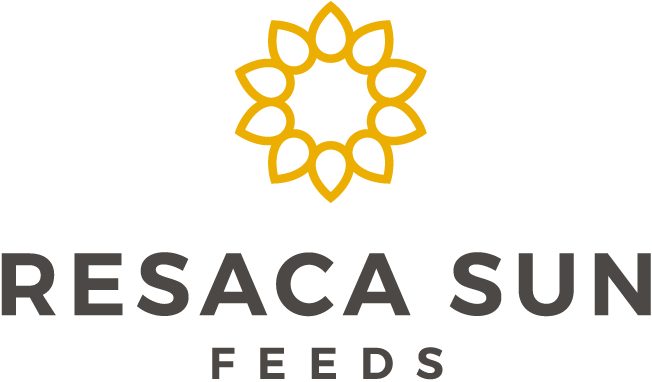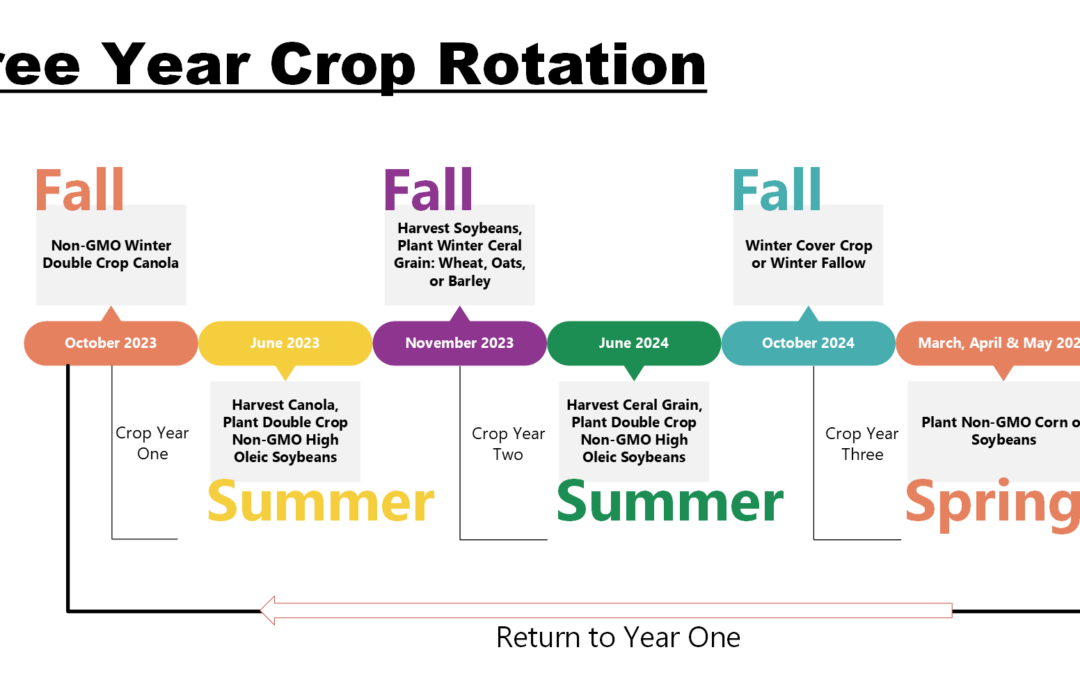By Andrew Moore
Moore’s Seed and Grain Farms has entered the decision season. Where we ask questions like: What do we plant this spring for fall 2024 harvest? How many acres are going to be in corn, soybeans, “High Oleic” soybeans, grain sorghum, sunflowers, maybe even a summer cover crop. What varieties do we plant? Do we venture into a 95-day corn versus a 118-day corn? The overwhelming fear of too much or not enough moisture, insect pressure, market volatility, equipment requirements, and labor can lead to decision paralysis. Farming is not for the emotionally and physically weak.
A specific and non-negotiable 5-year crop rotation per field assists with managing our risks. The choices we make yearly is decreased due to our crop rotation: Corn, Winter Canola, double crop soybeans, winter wheat/oats/barley, double crop soybeans, cover crop/fallow, summer corn. We choose to follow this specific crop rotation to create diversity in our integrated pest management program.
Sadly, USA and world farmers have made mistakes choosing to plant a mono cultivated cropping system; the same crop year after year on the same acre. This system has proven to increase pests: crawling, flying, and soil born. Our decision to the specific crop rotation was developed 15 years ago. We have maintained the system and are seeing the data to prove our decision is best for our farm.
Since the strictly followed crop rotation designates the number of acres in a double crop or a full season crop, the decision on what to plant lies in what varieties do we plant? Should we plant a group 4 or group 6 soybean? Should we plant Non-GMO High Oleic Soybeans? Our decisions are based on our ending stocks forecast value. Other data we use to help the decision are the futures markets value, last year’s on-farm field yield, test plot yield, historical field production, and our “gut feeling.” The bottom line is we make the best decision for our farm. In 9 months, we find out if it was a good decision.
This year, we are deciding if planting Non-GMO High Oleic Soybeans (SB.HO) will be the best option for our vertically integrated businesses and for our customers. We have seen a significant increase in the demand for soy free feeds over the last years yielding 20% of our feed sales. Do we plant 2,500 acres of group 4 or group 5 SB.HO? To help us determine our demand, we have begun polling our customers on the viability of High Oleic soybeans.
We have heard from you that more information is required to help you make the decision if High Oleic fatty acid is a good option for you. Even though we believe that Non-GMO High Oleic fats are good for your livestock, we want to deliver more information and data to help you make that decision. Please be on the lookout for an invite to a webinar that will give insight to the value of Non-GMO Soybeans in your livestock’s diet.
As we journey through this decision season, please be praying for the Moore family. Dell Moore, the matriarch, has turned 96 years old. Aging in place has been the Moore’s theme the last 10 years. We believe that being present during holy moments in a person’s life is spiritually and emotionally fulfilling; however, it is emotionally painful and physically draining. Please pray for my family as we journey through the next holy moments this year.

